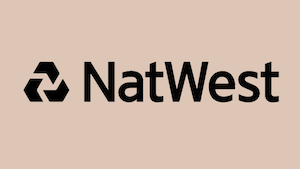
Best AI Practices to LLM fine tuning (Large Language Models) for Businesses with Fine Tuned Custom Datasets
In today’s rapidly evolving business landscape, artificial intelligence (AI) has become a crucial tool for Ai decision making and process optimization. Large Language Models (LLMs) are at the forefront of this AI revolution, offering unprecedented capabilities in natural language processing and generation. However, to truly harness the power of LLMs for specific business needs, companies are turning to fine-tuning techniques. This article delves into the world of LLM fine tuning, exploring its importance, best practices, and how it compares to other AI techniques like what is Retrieval Augmented Generation (RAG).

What is AI fine-tuning?
- LLM fine-tuning is like teaching a super-smart language model to understand the specific words, topics, and ways of talking that are important for your business.
- It helps the AI give more accurate and relevant answers to customers because it learns from your company’s own data and the kind of questions people usually ask.
- By understanding your business better, the AI can help automate tasks like answering emails or providing customer support in a way that sounds just like your company.
What is LLM fine-tuning and why is it important for businesses?
The Benefits of Fine-Tuning Pre-trained Models for Sentiment Analysis
When it comes to natural language processing tasks like sentiment analysis, leveraging a general language model can be highly effective. However, for a specific task or domain, fine-tuning is often the preferred approach over training a model from scratch. Fine-tuning allows you to adapt a pre-trained model to your particular use case, saving time and computational resources while still achieving excellent results. This process involves taking a model with broad language understanding and refining it for tasks such as sentiment analysis, ensuring optimal performance for your specific needs.
Understanding the basics of large language models & pre-trained language models
Large Language Models (LLMs) are advanced AI systems trained on vast amounts of text data to understand and generate human-like language. These models, such as GPT (Generative Pre-trained Transformer) series, have revolutionized natural language processing tasks. LLMs are pre-trained on diverse datasets, allowing them to perform a wide range of language-related tasks. However, their generalized knowledge may not always align perfectly with specific business needs, which is where fine-tuning comes into play.
The benefits of fine-tuning LLMs for specific business needs
Fine-tuning LLMs offers numerous advantages for businesses seeking to leverage AI in their operations. By adapting a pre-trained model to a specific domain or task, companies can achieve higher accuracy and relevance in their AI-powered solutions. Fine-tuning allows businesses to incorporate their unique vocabulary, industry-specific knowledge, and proprietary data into the model, resulting in more accurate and contextually appropriate outputs. This process enhances the model’s ability to understand and generate content that aligns with the company’s specific requirements, leading to improved Ai decision making and more efficient AI-driven processes.
How fine-tuning differs from pre-trained models
While pre-trained models offer a strong foundation for natural language processing tasks, fine-tuning takes these models a step further by tailoring them to specific use cases. Fine-tuning is the process of further training a pre-trained model on a smaller, specialized dataset relevant to the target domain. This approach allows the model to adapt its learned representations to the nuances and intricacies of the business-specific language and context. Unlike using a pre-trained model as-is, fine-tuning enables businesses to create custom AI solutions that are more aligned with their unique needs and objectives.
How can businesses prepare datasets for Large Language Model fine-tuning?
The Fine-Tuning Process: Leveraging Existing Knowledge for Specific Tasks
Fine-tuning requires a model with strong language understanding capabilities as a foundation. This process involves using labeled data from a new dataset to adapt the model to a specific domain or task. By leveraging the model’s existing knowledge and refining it with domain-specific information, fine-tuning can achieve impressive results with less data and computational resources compared to training from scratch. This approach is particularly effective when dealing with specialized vocabularies or unique linguistic patterns in the new dataset.
Best practices for cleaning and preprocessing data for optimal results with supervised fine-tuning
Once the relevant data sources have been identified, it’s crucial to clean and preprocess the data to ensure optimal fine-tuning results. This step involves removing irrelevant information, correcting errors, and standardizing the format of the data. Preprocessing may also include tokenization, removing duplicates, and handling special characters or formatting issues. By investing time in data cleaning and preprocessing, businesses can significantly improve the quality of how to fine tune LLM models and reduce the likelihood of introducing biases or errors during the training process.
Identifying relevant data sources within your organization
To begin the fine-tuning process, businesses must first identify and collect relevant data sources within their organization. This may include internal documents, customer interactions, product descriptions, and industry-specific reports. The goal is to create a custom dataset that accurately represents the language, terminology, and knowledge specific to the company’s domain. By leveraging these internal resources, businesses can ensure that the fine-tuned model will be well-equipped to handle the unique challenges and requirements of their industry.
Ensuring data quality and diversity for effective fine-tuning LLM training
The success of fine tuning LLMs heavily depends on the quality and diversity of the custom dataset. Businesses should strive to include a wide range of examples that cover various aspects of their domain, including different writing styles, topics, and scenarios. This diversity helps the model generalize better and handle a broader range of tasks within the specific business context. Additionally, ensuring the data is free from biases and represents the company’s values and ethical standards is crucial for developing responsible custom AI solutions.
What are the best practices for fine-tuning large language models?
The process of fine-tuning a language model involves adjusting the model weights based on a specific training dataset. This approach builds upon the initial training, which provides a foundation of general language understanding. By fine-tuning, we can adapt the model to specialized tasks or domains while retaining its broad linguistic capabilities. The initial training on a large corpus ensures the model has a comprehensive grasp of language structure and semantics, which is then refined through targeted fine-tuning to excel in particular applications.
Selecting the right pre-trained model as a starting point
Choosing the appropriate pre-trained model is a critical first step in the fine-tuning process. Factors to consider include the model’s size, architecture, and training data. For instance, businesses may opt for models like BERT for natural language understanding tasks or GPT for text generation. The selection should align with the specific requirements of the business use case and the available computational resources. Some popular options include open-source models available through platforms like Hugging Face, as well as proprietary models offered by cloud providers such as AWS LLM services.
Monitoring and evaluating the fine-tuning process
Effective monitoring and evaluation are crucial for successful LLM finetuning. Businesses should establish clear metrics and evaluation criteria to assess the performance of the fine-tuned model. This may include measures such as accuracy, perplexity, or task-specific metrics relevant to the business use case. Regular monitoring during the fine-tuning process allows for early detection of issues such as overfitting or degradation in performance. Iterative refinement based on these evaluations helps ensure that the fine-tuned model meets the desired performance standards and continues to improve over time.
Choosing appropriate fine-tuning best practices and techniques for Large Language Models
There are various fine-tuning methods available, each with its own strengths and use cases. Supervised fine-tuning involves training the model on labeled examples specific to the target task. Instruction fine-tuning, on the other hand, focuses on teaching the model to follow specific instructions or prompts. For more complex scenarios, businesses may consider advanced techniques like few-shot learning or meta-learning. The choice of fine-tuning method should be based on the available data, the desired outcome, and the specific requirements of the business task at hand.
Vincent Valentine: Expert in Artificial Intelligence
Vincent Valentine, CEO & Founder of unOpen.AI, brings over two decades of entrepreneurial expertise to the forefront of AI innovation. As a serial entrepreneur with a portfolio spanning multiple industries, he offers a unique perspective on the application of technology and software. His experience includes successful collaborations with leading companies such as BBC, Netflix, and Amazon Prime Video. Vincent is a respected voice in the AI community, regularly sharing his insights through social media, podcasts & public speaking.

How does fine-tuning compare to other Artificial Intelligence techniques like RAG?
Fine-tuning a model on a large dataset not only improves its performance on the training data but also enhances its ability to generalize to unseen data. This process allows the model to learn patterns and relationships in a way that the model can apply to new, previously unencountered information. By exposing the model to diverse examples during training, we can significantly improve its capacity to handle real-world scenarios. The key is to use high-quality, representative data to improve the model’s overall performance and robustness across various applications.
Comparing fine-tuning and RAG for different business scenarios, Fine Tuning Vs RAG
When deciding between fine tuning vs RAG, businesses must consider their specific needs and use cases. Fine-tuning is particularly effective when the goal is to adapt the model’s entire knowledge and behavior to a specific domain. It’s well-suited for tasks that require deep understanding of industry-specific language and concepts. On the other hand, advanced RAG excels in scenarios where access to external, up-to-date information is crucial. For instance, a RAG chatbot can provide more accurate responses to queries about rapidly changing information, such as product availability or current events.
Combining fine-tuning methods & RAG for advanced AI solutions
For businesses seeking the most comprehensive custom AI solutions, combining fine-tuning and RAG meaning you can yield powerful results. By fine-tuning a model on domain-specific data and then integrating it with an advanced RAG system, companies can create AI applications that possess both deep domain knowledge and the ability to retrieve and incorporate the latest information. This hybrid approach allows for more flexible and robust AI decision making or decision-making, capable of handling a wide range of business scenarios with improved accuracy and relevance.
Understanding Retrieval Augmented Generation (RAG)
What is Retrieval Augmented Generation? (RAG) is an advanced AI technique that combines the strengths of large language models with external knowledge retrieval. In a advanced RAG system, the model first retrieves relevant information from a knowledge base or Rag vector database before generating a response. This approach allows the model to access up-to-date and specific information that may not be present in its original training data. RAG has gained popularity in various applications, including question-answering systems and chatbots, due to its ability to provide more accurate and contextually relevant responses.
What tools and platforms are available for LLM fine tuning?
Popular frameworks like Hugging Face for fine tuning
Hugging Face has emerged as a leading platform for LLM finetuning, offering a wide range of pre-trained models and tools for customization. Its user-friendly interface and extensive documentation make it accessible for businesses of various sizes and technical expertise. The platform provides support for multiple fine-tuning techniques, including full fine-tuning and efficient fine-tuning methods like LoRA (Low-Rank Adaptation). Hugging Face’s collaborative features also enable businesses to share and leverage fine-tuned models within their organizations or with the wider AI community.
Cloud-based solutions for scalable LLM fine-tuning
Major cloud providers like AWS offer scalable solutions for LLM fine-tuning, allowing businesses to leverage powerful computing resources without significant upfront investments. AWS SageMaker, for instance, provides tools for data preparation, model training, and deployment of fine-tuned LLMs. These cloud-based platforms often include features for monitoring, versioning, and managing machine learning workflows, making them suitable for businesses looking to implement robust and scalable custom AI solutions.
Open-source options for fine-tune custom pipelines
For businesses with specific requirements or those seeking more control over the fine-tuning process, open-source libraries and frameworks offer flexible options. Tools like TensorFlow and PyTorch provide low-level control for implementing custom fine-tuning pipelines. These options are particularly valuable for companies with experienced data science teams who can leverage advanced techniques like multi-task fine-tuning or domain-adaptive pre-training to create highly specialized AI models tailored to their unique business needs.
How can businesses measure the success of their fine-tuned LLMs?
Defining key performance indicators for fine-tuned models
Measuring the success of fine-tuned LLMs requires establishing clear and relevant key performance indicators (KPIs). These KPIs should align with the specific business objectives and use cases for which the model was fine-tuned. Common metrics include accuracy, precision, recall, and F1 score for classification tasks, or perplexity and BLEU score for text generation tasks. Additionally, businesses should consider domain-specific metrics that reflect the model’s performance in real-world scenarios, such as customer satisfaction scores for chatbots or relevance ratings for content recommendation systems.
Iterative improvement & continuous fine-tuning
The process of LLM fine tuning should be viewed as an ongoing effort rather than a one-time task. As businesses evolve and new data becomes available, continuous fine-tuning strategies can help maintain and improve the model’s performance over time. This may involve regularly updating the fine-tuning dataset with new examples, adjusting the model architecture or hyperparameters based on performance feedback, or even exploring advanced techniques like online learning for real-time adaptation. By adopting an iterative approach to fine-tuning, businesses can ensure that their AI solutions remain effective and aligned with their changing needs and objectives.
Conducting A/B testing with pre-trained & fine-tuned models
The best A/B testing is a valuable approach for comparing the performance of fine-tuned models against their pre-trained counterparts or alternative versions. By exposing different user groups or scenarios to the original and fine-tuned models, businesses can gather empirical evidence of the improvements achieved through fine-tuning. This testing can reveal insights into the model’s effectiveness in handling specific business tasks, its ability to generate more relevant outputs, and its impact on user satisfaction or business outcomes.
Frequently Asked Questions
What is fine-tuning an LLM and why do businesses need to fine-tune?
Fine-tuning an LLM involves adjusting the pre-trained model on a specific dataset to improve its performance for particular tasks. Businesses need to fine-tune to ensure the model understands their unique language, context, and objectives, which enhances the relevance and accuracy of outputs.
Can you provide an example of fine-tuning for a specific task?
An example of fine-tuning for a specific task could be training a large language model (LLM) to handle customer service inquiries. By using a dataset of past customer interactions, the model can learn to generate appropriate and context-aware responses, making it more effective in real-world applications.
What are the different methodologies for fine-tuning models?
Fine-tuning methodologies can vary, but common approaches include full fine-tuning, where all layers of the model are adjusted, and selective fine-tuning, where only certain layers are updated. Additionally, techniques like transfer learning and domain adaptation are often employed to optimize the training of LLMs.
What role do datasets for fine-tuning play in training a language model?
Datasets for fine-tuning are crucial as they provide the specific examples the model learns from. A well-curated dataset enhances the model's ability to perform tasks relevant to the business, thereby improving its overall effectiveness and accuracy in generating responses.
How is full LLM fine-tuning different from other fine-tuning methods?
Full LLM fine-tuning, also known as full fine-tuning, involves adjusting all the weights of the model based on the new dataset. In contrast, other methods may only adjust certain layers or parameters, allowing for less computational expense and faster training while still achieving decent performance.
What is the significance of validation datasets throughout the training process?
Validation datasets are essential for monitoring the model's performance during training. They help in assessing whether the model is learning effectively without overfitting to the training data. Regular evaluation using validation datasets ensures that the fine-tuning process is successful and that the model generalizes well to new data.
How can businesses explore how fine-tuning can improve LLM applications?
Businesses can explore fine-tuning by conducting experiments with different datasets and evaluating model performance on specific tasks. By analyzing outcomes, they can understand how fine-tuning impacts LLM applications and make data-driven decisions to enhance their AI solutions.
What challenges might arise when fine-tuning an LLM?
Challenges in fine-tuning an LLM may include the need for high-quality, domain-specific datasets, the risk of overfitting, and the computational resources required for training. Additionally, businesses may face difficulties in achieving the desired balance between performance and efficiency during the fine-tuning process.
What is RAG GenAi and how does it relate to fine-tuning models?
RAG GenAi refers to the process of generating data that can be used for training and fine-tuning LLMs. It allows businesses to create synthetic datasets that enhance the variety and quality of data available for fine-tuning, thereby improving the overall training of the language model.

Gain a Competitive Edge
Be a first-mover in your industry with AI-powered solutions.
Boost Productivity
Maximize output with 24/7 AI automation.
Reduce Costs
Optimize operations and streamline workflows.
Enhance Efficiency
Free up your team with automated tasks.
Make Data-Driven Decisions
Leverage AI analytics for strategic insights.
Drive Innovation
Discover new opportunities for growth and service development.
Improve Accuracy
Minimize errors with precise AI-driven analysis.





























